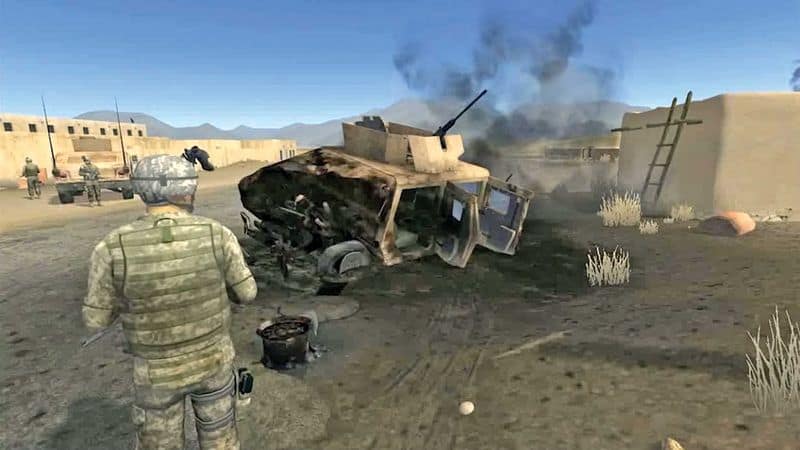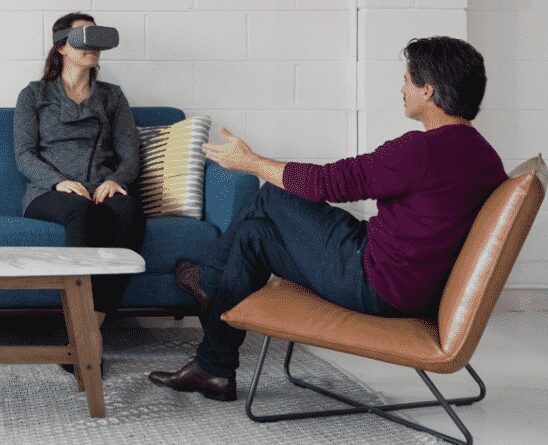Given that VR hijacks your senses, it’s no surprise that startups are looking to do Virtual Reality Exposure Therapy. It’s actually not all that new. USC has a very successful program using virtual reality to provide relief from PTSD at over 100 VA hospitals and military bases. But now start-ups are exploring ways to use VR for therapy which could have major implications for the profession.

Of the 2.7 million veterans of Operations Iraqi Freedom, an estimated half-million deal with psychological scars from taking a life, failing to save one, roadside bombs and similar experiences. In the USC program,
A typical course of treatment runs for 10 weekly sessions, with a follow-up three months later. A more intense version runs twice a week for five weeks. Either way, the results suggest that participants’ stress symptoms, including depression, decrease by as much as 80 percent. In cases where it doesn’t work, veterans are referred back to conventional therapy.
USC’s Bravemind software is so powerful that the virtual scenes have a game-like sensibility to keep them from being too realistic. Therapists can “dial-up” the intensity of the experience by adding smoke, fire, and explosions. And blood and guts. But the experiences are powerful enough that it’s usually not needed.
It turns out that Palmer Luckey interned with the Braveheart group in his pre-Oculus Kickstarter days.
Virtual Reality Exposure Therapy Startups
USC is an early innovator here, but startups are beginning to offer exposure therapy for a broader range of traumas and phobias. Fear of flying, heights, spiders, and other issues are being targeted by companies like the Silicon Valley-based Limbix and the Spanish startup Psious.
Less expensive and easier to use VR headsets are helping to push the approach outside of universities and hospitals. And seeing a new area ripe for disruption, venture capital firms such as Sequoia Capital are providing the funding.
Limbix sells a Google Daydream VR headset and compatible phone at cost. The company draws upon AI and psychological research to help therapists treat patients. From the NY Times,
Limbix combines technical and medical expertise. One key employee, Scott Satkin, is a robotics and artificial intelligence researcher who worked on the Daydream project at Google. Limbix also works with its own psychologist, Sean Sullivan, who continues to run a therapy practice in San Francisco.
Dr. Sullivan is using the new service to treat patients, including a young man who recently developed a fear of flying, something that causes anxiety simply when he talks about it.
By combining VR with Google Streetview, Limbix can bring a patient back to a childhood or other specific setting such as the scene of an accident.
Currently, most experiences in virtual reality exposure therapy are fairly basic as the rely on low-cost HMDs. But new headsets are coming later this year will offer six degrees of freedom. That will give therapists the option of using fully immersive experiences. VR exposure therapy tools will be available to therapists working independently in their own office.
Now add in social VR and AI

The current approaches are just the earliest stages of where we’re headed. Social VR will allow therapists to connect with clients at home through virtual recreations of professional settings. In five years, your therapist may not just be available through an app (Limbix is already doing that) but through your smart glasses. And once we combine VR with AI, we’ll see the development of platforms for self-therapy. Right now, professionals are advising that trained psychologists are essential to the process of virtual reality exposure therapy.
VR can be an incredibly powerful tool to help people cope with traumas and phobias. Combined with AI, it could transform mental health treatment as we know it. That will dramatically expand access to therapy. And like other tech disruptions, it will simultaneously challenge the integrity of the profession. Today, the traditional news reporter and editor have to justify their existence. Tomorrow, it may be your therapist.
We’ve yet to fathom where virtual reality will take us.
Emory Craig is a writer, speaker, and consultant specializing in virtual reality (VR) and generative AI. With a rich background in art, new media, and higher education, he is a sought-after speaker at international conferences. Emory shares unique insights on innovation and collaborates with universities, nonprofits, businesses, and international organizations to develop transformative initiatives in XR, GenAI, and digital ethics. Passionate about harnessing the potential of cutting-edge technologies, he explores the ethical ramifications of blending the real with the virtual, sparking meaningful conversations about the future of human experience in an increasingly interconnected world.

